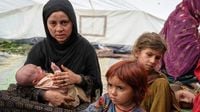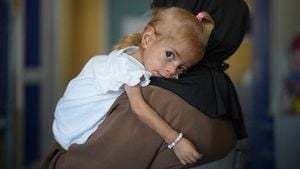In the early hours of August 31, 2025, a devastating 6.0-magnitude earthquake struck Afghanistan’s mountainous Kunar province, flattening villages and shattering the lives of thousands. The official death toll soared past 2,200, with more than 3,600 injured, according to figures released by Afghanistan’s government. Yet, amid the rubble and chaos, another, quieter tragedy unfolded—one that exposed the deep fissures in Afghan society and the deadly consequences of the Taliban’s restrictions on women.
Rescue teams, composed entirely of men, reached Andarlukak village a full 36 hours after the quake, as reported by The New York Times. By then, many injured women had gone without help or remained trapped under debris, waiting for female rescuers who would never come. The reason? Taliban-imposed rules strictly prohibit men from touching or even speaking to women outside their immediate family. Only close male relatives are allowed to assist, and women are banned from treating men who aren’t family members. As a result, when the first responders arrived, "none of them were women," witnesses told The New York Times.
Bibi Aisha, a 19-year-old survivor from Kunar province, described the harrowing aftermath. "Men and children were treated first, while women and girls were gathered in a corner and forgotten," she told reporters. Her words echoed the experience of countless Afghan women: "They forgot about us." Some, bleeding and in pain, were pushed aside as rescuers focused on men and children. In some cases, when no male relatives were present, the bodies of women were dragged out by their clothes to avoid any direct skin contact. “No one offered the women help, asked what they needed or even approached them,” Aisha recalled, summing up the neglect and isolation that defined those first critical hours.
Tehzibullah Muhazab, a 33-year-old volunteer, witnessed the same grim reality in Mazar Dara village. “It felt like women were invisible. The men and children were treated first, but the women were sitting apart, waiting for care,” he told The New York Times. Male rescuers hesitated to free women trapped under rubble, leaving them to wait for female help from neighboring villages—help that was often too late to save them. In Debgareh village, it took 20 hours for rescuers to arrive, and when they did, one woman hid behind broken walls upon seeing an all-male team. “We’re not allowed to talk to women or interact with them because the law forbids it. Even touching a dead woman has consequences,” a rescuer explained to The Daily Telegraph.
The absence of female rescuers and doctors was no accident. In 2024, the Taliban banned women from entering medical schools, worsening an already critical shortage of female doctors and rescue workers. Since seizing control in 2021, the Taliban has systematically rolled back women’s rights, barring them from education beyond age six, travel without a male relative, and most forms of employment. Only a handful of women remain in foreign aid teams, and even they are forbidden from treating men in disaster zones. As The New York Times reported, these policies have compounded the suffering of women in the quake’s aftermath, turning a natural disaster into a gendered catastrophe.
The humanitarian crisis deepened as local Taliban authorities in Nangarhar province imposed new restrictions on aid organizations following the earthquake. According to a statement from the provincial governor’s media office, humanitarian groups were banned from photographing women during aid distribution, in an effort to “avoid what provokes community sensitivities” and to respect “Afghan and Islamic customs and values.” These directives, issued by the provincial Ministry of Justice and reported on September 6, 2025, were accompanied by warnings against violations. Since December 2022, the Taliban has restricted women’s work in non-governmental and international organizations, later extending these bans to United Nations employees in April 2023.
According to UN officials cited by Kursiv Media, these restrictions have made it nearly impossible for relief agencies to deliver aid to women and girls, especially in remote and mountainous areas like Kunar and Nangarhar, where the presence of female staff is essential. Only a few women are still able to participate in relief operations, despite the urgent medical needs of the affected population. Field sources revealed that six pregnant women died in Kunar province due to the lack of female medical staff and difficulties during childbirth. Local activists have condemned the Taliban’s directives, arguing that they further complicate access to aid for women and girls in the hardest-hit regions.
The Taliban’s Ministry of Health, for its part, denied any shortage of female medical staff, insisting that hospitals in Kunar, Nangarhar, and Laghman provinces have female doctors and nurses providing services to the affected. However, the World Health Organization contradicted this claim, confirming that restrictions on female doctors have caused real difficulties in delivering healthcare to remote communities.
The United Nations Population Fund (UNFPA) estimates that around 11,600 pregnant women now require urgent support in the quake’s aftermath. Emergency response teams have been deployed to provide both medical and psychological aid, while UNICEF and its partners are working to deliver humanitarian assistance to affected families. Yet, the scale of the need far outstrips the capacity of the few remaining female health workers, many of whom face harassment and threats under Taliban rule.
UN Women’s Susan Ferguson warned that Afghan women, already stripped of education and medical opportunities, will "again bear the brunt of this disaster." The Taliban has not released a gender breakdown of casualties, effectively concealing the true scale of women’s suffering. Aid workers fear that, with female doctors banned from training and many humanitarian workers silenced, survivors will be left without adequate relief.
The stories from Kunar and neighboring provinces are a stark reminder that, in Afghanistan, calamity may strike everyone, but women are often the last to be saved—if they are saved at all. The earthquake did not discriminate, but the response to it was shaped by policies that left women invisible, forgotten, and, in too many cases, dead without dignity. As Bibi Aisha put it, “God saved me and my son, but that night I realized being a woman here means we’re always the last to be seen.”
For many Afghan women, the earthquake’s devastation was compounded by a system that rendered them invisible in their hour of greatest need. The world’s attention may move on, but for those left behind in the ruins, the struggle for recognition—and survival—continues.




